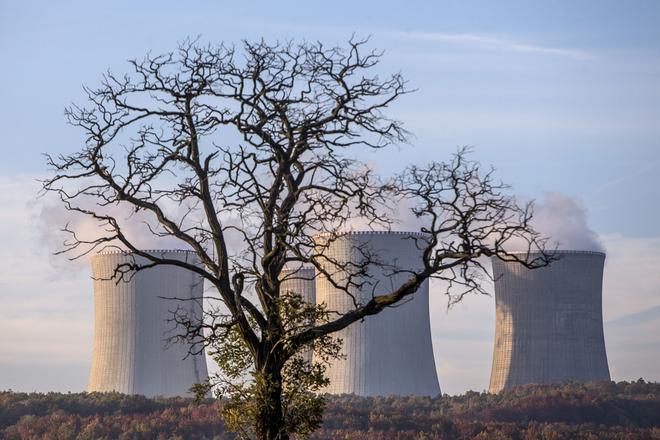Late last year, Slovakia's dominant power producer, Slovenské Elektrárne (SE), was sold in a €750-million deal to a Czech-Slovak conglomerate, Energetický a Průmyslový Holding (EPH).
Or at least part of it was: the 66-percent stake held by Italian energy giant Enel will go to EPH in two stages, it was announced on 18 December. The second stage of the sale will depend on the completion of two new nuclear reactors now being built at Mochovce.
Those reactors should have long since been up and running (Mochove was first planned in 1981; the first two reactors have been generating power since 1998 and 2000), but the launch date has been pushed back repeatedly, and the budget for completion of the third and fourth reactors has ballooned – from €2.8 billion to €4.6 billion.
In fact, the pressure vessel for the third reactor was lowered into its pit more than five years ago. The Slovak Spectator noted in September 2010 that by then it was already more than 20 years old. Comfortingly, we reported Slovakia’s Nuclear Regulatory Authority (ÚJD) as saying that "the ravages of time have not caused damage to the pressure vessel," and added a reassuring comment by Miroslav Fiala, from the manufacturer, Škoda JS: “The vessel was supplied many years ago, indeed, but the inspection has showed that it is in perfect condition.”
Inconveniently, while the pressure vessel remains strong (we hope), the price of electricity has weakened considerably. By some estimates, it is now only one third of the rate used in the original investment plan.
But economic logic has only a distant relationship to planning in the energy sector. In January 2001, we reported, in a story entitled 'Government stunned by SE Mochovce plans' that the company (then wholly state-owned) had ignored the government of the day and directly approached potential partners to invest in the third and fourth reactors.
Ondrej Studenec, then general director of the energy section at the Ministry of Economy, stated flatly: "There is zero return potential in that project." But SE spokesman Rastislav Petrech argued that completion would be the most cost-effective solution, adding: "In 2006 and 2008, when the two reactors at Bohunice are decommissioned, Slovakia will need a replacement."
Those reactors have long since closed, but the lights have stayed on. Among other reasons, this is because demand for power Europe-wide has stalled, amid recession, advances in energy efficiency, and pressure on carbon emissions. Electricity from the new Mochovce reactors will be carbon-free, but very expensive.
So why is EPH buying into SE? Presumably, the government have offered it a very sweet deal, probably on the price at which the state-controlled grid will buy the power it generates, or at the very least on the revenues of SE (which is effectively a monopoly).
The fact that the prime minister announced, immediately after the deal was reported, that the government had acquired a pre-emptive right to increase its stake in SE to 51 percent, mirroring a similar deal over gas monopoly SPP when EPH bought a share in that business in 2014, suggests that neither it nor EPH will lose out.
So who will? Well, to paraphrase a poker aphorism, if you look around the table and you don't see a sucker, then it's you. The normal advice in this situation is to leave the table. Enel, which clearly lacks EPH's political connections, just has. But we, the consumers, have little choice but to stay. Something to think about when your next bill arrives...



 Jaslovské Bohunice nuclear power plant. (source: Sme)
Jaslovské Bohunice nuclear power plant. (source: Sme)